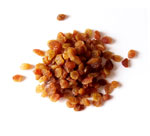AAP Issues Guidelines on Chaperone Use during Pediatric Exam
Posted by: admin on: September 26, 2011
Use of Chaperones during the Physical Examination of the Pediatric Patient, highlights issues of patient comfort, privacy and confidentiality.
Team@CMHF
- Using a chaperone during a pediatric physical examination should be a shared decision between the patient and pediatrician according to the American Academy of Pediatrics (AAP).
- The physical examination of an infant, toddler or child should always be performed in the presence of a parent or guardian.
- If a parent or guardian is unavailable or the parent’s presence interferes with the physical examination, such as in a possible case of abuse or parental mental health issues, a chaperone should be present during the physical examination.
- If the patient is an adolescent or young adult and the examination requires inspection or palpation of anorectal or genital areas and/or the female breast, a chaperone is recommended.
- In all cases, physicians should discuss in advance the scope, nature and purpose of the physical examination to be performed with the pediatric patient, provided the child is old enough to understand, and/or his or her parent.
- Every effort should be made, such as using gowns or drapes to protect privacy, to relieve the physical or psychological discomfort of some examination procedures.
- A nurse or medical assistant, rather than a friend or family member, is preferred as a chaperone during female breast, genital or anorectal examinations.
- Situations in which a physician may request the presence of a chaperone may include evidence of mental health issues in the patient or parent; developmental issues; or the presence of anxiety, tension, or reluctance regarding the examination.
- For the rare situation in which the patient refuses an appropriate chaperone and the physician is concerned that providing the examination might result in false allegations or medico-legal risk, the physician is not obligated to provide further treatment
- If a medical chaperone is indicated and the patient refuses, the patient or parent should be given alternatives, including seeking care elsewhere.
- Pediatricians should develop policy about the use of chaperones in the office or clinic setting and document in the medical record if they are unable to adhere to the policy or state medical board regulations.
Read more: http://www.medscape.com/viewarticle/741574
Search
- drchasrani: Difficult to get such a data, authenticated at that. Try Times of India online library
- rakesh pore: hi, where can i get genuine information about "10 most common drugs sold in india?" i want it for a local project
- nilesh dutta: sir, Plz give detail about MBA Sports Management Thanks and Regards


Leave a Reply